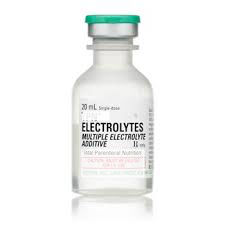A safer Li-ion electrolyte with wide operating temperature window
 BroadBit Batteries is proud to announce the introduction of its newly developed lithium-ion electrolyte. This novel electrolyte is safer and more robust than typical electrolytes used in Li-ion batteries today and is compatible with a wide range of commercial anodes, cathodes and separators. Compared to competitor Li-ion electrolytes, BroadBit’s novel electrolyte has a wider operating temperature, cannot produce toxic HF fumes, suppresses dangerous thermal runaway and does not produce reactive side compounds that damage battery components, reduce battery performance and reduce battery life, particularly at elevated temperatures or during fast charging.
BroadBit Batteries is proud to announce the introduction of its newly developed lithium-ion electrolyte. This novel electrolyte is safer and more robust than typical electrolytes used in Li-ion batteries today and is compatible with a wide range of commercial anodes, cathodes and separators. Compared to competitor Li-ion electrolytes, BroadBit’s novel electrolyte has a wider operating temperature, cannot produce toxic HF fumes, suppresses dangerous thermal runaway and does not produce reactive side compounds that damage battery components, reduce battery performance and reduce battery life, particularly at elevated temperatures or during fast charging.
“BroadBit’s new electrolyte for Li-ion batteries not only alleviates the safety drawbacks of commonly used electrolytes, but simultaneously improves the longevity of Li-ion battery cells. The longevity improvement has already been validated in an “apples-to-apples” comparison of our in-house made 18650 type cylindrical cells against high-end commercial cylindrical Li-ion cells.”, said BroadBit CTO, Andras Kovacs, “This innovation opens the door to the production of wide operating temperature range batteries with both longer calendar life and cycle life.”
“BroadBit is committed to improving battery safety, robustness and longevity”, added BroadBit CEO, David Brown, “This important improvement to lithium based batteries is a critical stepping stone in BroadBit’s quest to develop better performing and more sustainable batteries.”
About BroadBit:
BroadBit is a technology company developing revolutionary new batteries using novel chemistries to power the future green economy. We have already made high performance industrial prototypes and are now commercializing the technology for next generation electric vehicles, portable electronics, starters and grid energy storage. Our batteries enable Increased range/use time, longer lifetime, reduced cost, improved environmental friendliness, improved operating temperature range, and scalability to any required production volume.